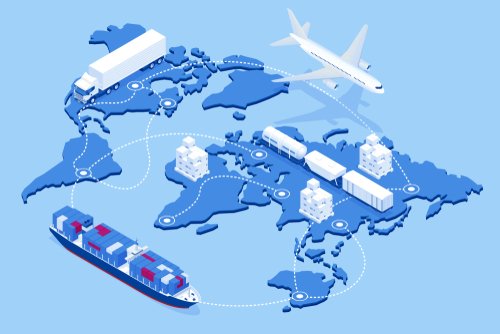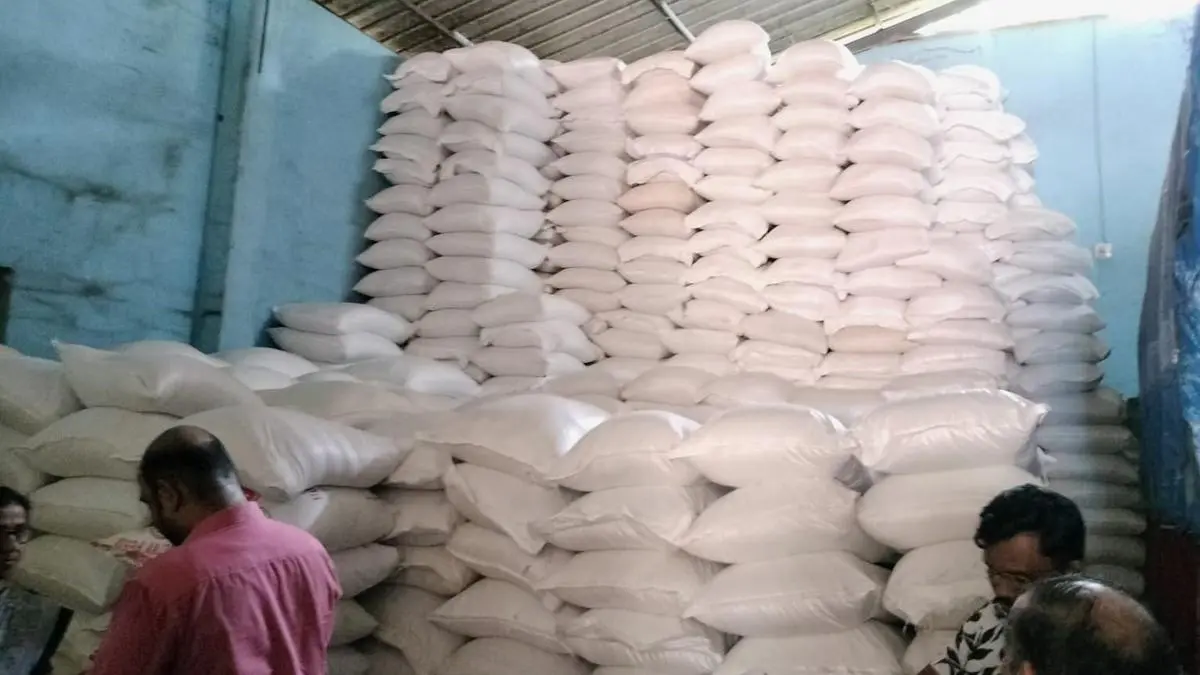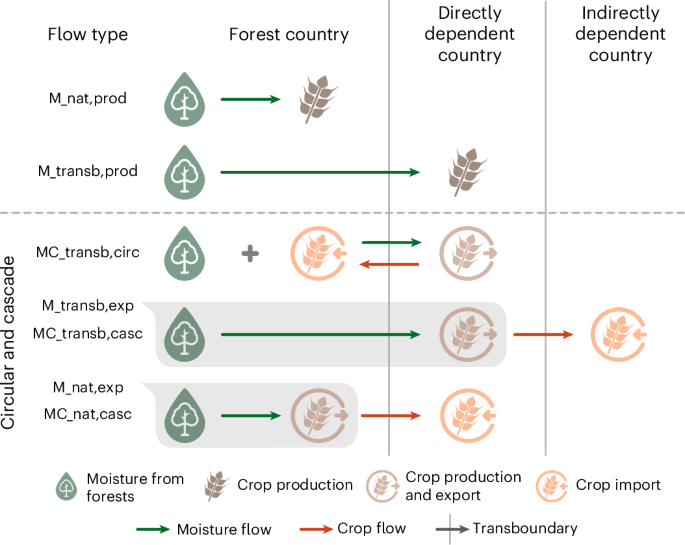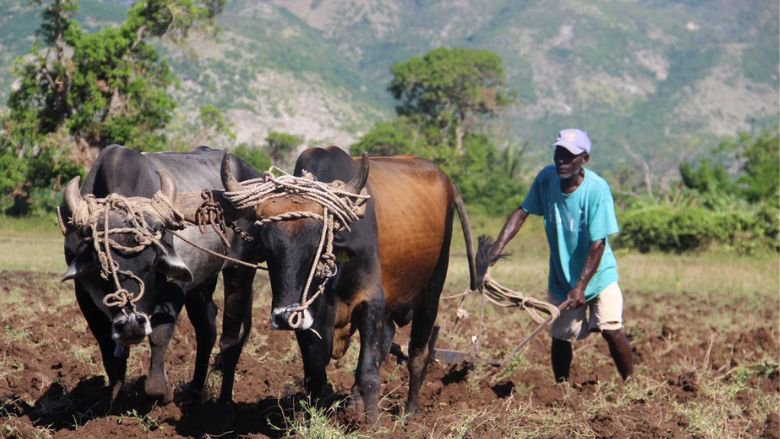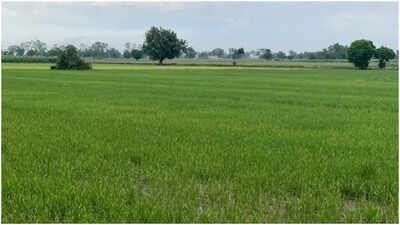Report on Enhancing Food and Beverage Supply Chain Resilience Through Digital Transformation and Alignment with Sustainable Development Goals (SDGs)
Introduction: The Imperative for Sustainable Supply Chains
The global food and beverage industry faces significant disruptions that threaten its stability and impact the achievement of the United Nations Sustainable Development Goals (SDGs). In an era of increasing climate volatility, geopolitical instability, and economic pressures, building resilient and transparent supply chains is critical. This report examines how digital transformation, utilizing technologies such as blockchain, the Internet of Things (IoT), and Artificial Intelligence (AI), can fortify supply chains against these shocks. Such advancements are instrumental in promoting food security (SDG 2), fostering responsible consumption and production (SDG 12), and supporting climate action (SDG 13).
Analysis of Supply Chain Vulnerabilities and SDG Implications
The susceptibility of food supply chains to external shocks has been starkly highlighted by recent global events. These vulnerabilities directly impede progress on several key SDGs.
- Climate Change (SDG 13: Climate Action): Extreme weather events, including droughts and floods, disrupt agricultural yields and create raw material shortages. The 2021 drop in Brazil’s coffee production due to frost and drought exemplifies how climate change directly threatens agricultural stability and economic security, undermining efforts to combat climate change and its impacts.
- Geopolitical Instability (SDG 2: Zero Hunger & SDG 17: Partnerships for the Goals): International conflicts and trade disputes strain global food distribution networks, leading to shortages and price hikes. The war in Ukraine, for instance, has caused wheat shortages and increased energy costs, jeopardizing global food security and highlighting the need for stable global partnerships.
- Economic Pressures (SDG 8: Decent Work and Economic Growth): Inflationary costs for fuel, labor, and materials compress industry margins. This economic instability challenges the goal of achieving sustainable economic growth and productive employment for all.
Digital Transformation as a Catalyst for Sustainable Development
The adoption of digital technologies offers a pathway to mitigate risks and align supply chain operations with the 2030 Agenda for Sustainable Development. These innovations provide the necessary tools for transparency, predictive insight, and automation.
Blockchain for Traceability and Responsible Production (SDG 12)
Blockchain technology provides an immutable and transparent ledger, which is fundamental to achieving responsible consumption and production patterns. Its application enhances food safety, reduces fraud, and minimizes waste.
- Enhanced Food Safety: Walmart’s use of IBM Food Trust reduced the time to trace a product’s origin from seven days to 2.2 seconds, dramatically improving recall efficiency and consumer safety.
- Combating Food Fraud: Companies like Nestlé and Carrefour use blockchain-enabled QR codes to allow consumers to verify product sourcing and quality, fostering trust and promoting transparency in line with SDG 12.
IoT for Waste Reduction and Food Security (SDG 2 & SDG 12)
The Internet of Things (IoT) enables real-time monitoring of perishable goods, which is crucial for reducing food loss and ensuring food safety, thereby contributing directly to SDG 2 (Zero Hunger) and SDG 12.3 (halving per capita global food waste).
- Cold Chain Management: Maersk’s ‘Captain Peter’ IoT solution remotely monitors refrigerated containers, preventing spoilage and ensuring the integrity of perishable food shipments.
- Smart Warehousing: IoT sensors in warehouses monitor inventory conditions and automate reordering, preventing spoilage and optimizing resource management.
AI and Predictive Analytics for Climate Resilience and Efficiency (SDG 9 & SDG 13)
Artificial Intelligence (AI) and machine learning are transforming supply chain management by enabling predictive forecasting and proactive risk management. This supports the development of resilient infrastructure (SDG 9) and strengthens adaptive capacity to climate-related hazards (SDG 13).
- Demand Forecasting: Nestlé utilizes AI to analyze data, which has significantly improved demand forecasting accuracy. This precision reduces waste and optimizes the procurement of raw materials, supporting sustainable production.
- Risk Mitigation: AI-driven tools allow companies to simulate disruption scenarios, enabling the development of robust contingency plans to ensure business continuity and supply stability.
Strategies for Building Resilient and Sustainable Supply Chains
A proactive, technology-driven approach is essential for building future-proof supply chains that contribute positively to the SDGs. Key strategies include:
- Enhancing Visibility and Traceability: Leverage blockchain and IoT for complete end-to-end traceability, reducing errors and improving food safety in line with SDG 12.
- Improving Agility with Predictive Analytics: Use AI to anticipate disruptions, allowing for real-time adjustments to sourcing and production strategies, which builds resilience against climate and economic shocks (SDG 13).
- Strengthening Collaboration and Partnerships (SDG 17): Share real-time data across the network of suppliers, distributors, and regulators to improve coordination and response times.
- Mitigating Risks through Diversification: Diversify supplier bases and invest in localized production to reduce reliance on vulnerable, long-distance supply chains, promoting local economies (SDG 8).
- Automating for Efficiency: Implement Robotic Process Automation (RPA) to streamline administrative tasks, freeing up resources for strategic planning focused on sustainability and resilience.
Case Studies in Sustainable Supply Chain Management
- McDonald’s: The company has built a resilient supply chain by partnering with local suppliers in each market, a strategy that supports local economies (SDG 8) and ensures product availability during global disruptions.
- Unilever: Unilever integrates IoT and blockchain into its sustainability-focused supply chain to improve the tracking of raw materials, ensuring compliance with ethical sourcing requirements and contributing to responsible production (SDG 12).
Conclusion: Advancing the 2030 Agenda Through Supply Chain Innovation
The food and beverage industry is at a critical juncture. Investing in digital transformation is no longer just a competitive advantage but a fundamental requirement for ensuring long-term resilience and sustainability. By embracing technologies that enhance transparency, efficiency, and predictive capabilities, companies can shift from a reactive to a proactive stance on disruption. This transformation is essential not only for navigating an unpredictable global landscape but also for making substantive contributions to achieving the Sustainable Development Goals, ensuring a stable, efficient, and sustainable food supply for the future.
Analysis of Sustainable Development Goals in the Article
1. Which SDGs are addressed or connected to the issues highlighted in the article?
The article on building resilience in the food and beverage supply chain connects to several Sustainable Development Goals (SDGs) by addressing challenges related to food security, industrial innovation, responsible production, and climate action.
- SDG 2: Zero Hunger: The article discusses disruptions to agricultural yields and raw material shortages caused by climate change and geopolitical instability, which directly impact food availability and security.
- SDG 9: Industry, Innovation, and Infrastructure: The core theme of the article is the digital transformation of the food and beverage industry’s supply chain. It highlights how technologies like AI, IoT, and blockchain are being used to build resilient, efficient, and technologically advanced infrastructure.
- SDG 12: Responsible Consumption and Production: The article explicitly addresses the reduction of food waste and spoilage. It details how technologies like blockchain and IoT help prevent fraud, reduce waste, enhance recall efficiency, and monitor perishable goods to prevent spoilage.
- SDG 13: Climate Action: Climate change is identified as a primary vulnerability for the food supply chain. The article mentions extreme weather events like droughts, floods, and frosts disrupting agricultural production, emphasizing the need for adaptation and resilience.
- SDG 17: Partnerships for the Goals: The article showcases several examples of partnerships, such as Walmart working with IBM and Nestlé with Carrefour, to implement new technologies and improve supply chain transparency and efficiency, demonstrating multi-stakeholder collaboration.
2. What specific targets under those SDGs can be identified based on the article’s content?
Based on the issues and solutions discussed, several specific SDG targets can be identified:
- Target 2.4 (under SDG 2): “By 2030, ensure sustainable food production systems and implement resilient agricultural practices that increase productivity and production… and strengthen capacity for adaptation to climate change, extreme weather, drought, flooding and other disasters.”
- Explanation: The article’s central argument is the need for resilient supply chains to navigate disruptions from climate volatility, such as the droughts and frosts that impacted coffee production in Brazil. The adoption of technology aims to strengthen the food system’s adaptive capacity.
- Target 9.4 (under SDG 9): “By 2030, upgrade infrastructure and retrofit industries to make them sustainable, with increased resource-use efficiency and greater adoption of clean and environmentally sound technologies and industrial processes…”
- Explanation: The article is a case study for this target, detailing how the food and beverage industry is upgrading its supply chain infrastructure with digital technologies (AI, IoT, blockchain) to improve efficiency, reduce waste, and enhance resilience.
- Target 12.3 (under SDG 12): “By 2030, halve per capita global food waste at the retail and consumer levels and reduce food losses along production and supply chains, including post-harvest losses.”
- Explanation: The article provides concrete examples of achieving this target. It mentions that IoT sensors reduce spoilage during transport and storage, and AI improves demand forecasting to prevent overproduction, both of which directly reduce food loss along the supply chain.
- Target 13.1 (under SDG 13): “Strengthen resilience and adaptive capacity to climate-related hazards and natural disasters in all countries.”
- Explanation: The entire article focuses on building resilience against shocks, with climate change being a primary driver. It discusses how predictive analytics and real-time monitoring help companies anticipate and mitigate risks from extreme weather events, directly contributing to this target.
3. Are there any indicators mentioned or implied in the article that can be used to measure progress towards the identified targets?
Yes, the article mentions or implies several quantitative and qualitative indicators that can measure progress:
- Time required for food traceability: The article provides a direct metric from Walmart’s implementation of blockchain, which reduced the time to trace a product’s origin from 7 days to 2.2 seconds. This is a clear indicator of improved efficiency and safety in the supply chain (relevant to Target 9.4).
- Reduction in food spoilage rates: It is mentioned that Maersk’s IoT solution has “helped reduce spoilage rates for perishable food shipments.” This percentage reduction would be a key indicator for measuring progress toward reducing food loss (Target 12.3).
- Demand forecasting accuracy: The article states that Nestlé uses AI to analyze data, which has “improved demand forecasting accuracy significantly.” The percentage improvement in accuracy is a measurable indicator of reduced waste and optimized production (Target 12.3).
- Impact of climate events on production: The article cites a “30 percent drop in production” for Brazilian coffee due to frost and drought. Measuring the stability or reduction of such percentage drops over time would indicate increased resilience to climate-related hazards (Targets 2.4 and 13.1).
- Efficiency of food recall management: The article notes that blockchain enhances “recall efficiency.” This can be measured by the speed, accuracy, and scope of product recalls, indicating a more resilient and safer food system.
4. Table of SDGs, Targets, and Indicators
| SDGs | Targets | Indicators |
|---|---|---|
| SDG 2: Zero Hunger | 2.4: Ensure sustainable food production systems and implement resilient agricultural practices to adapt to climate change and extreme weather. | Percentage drop in agricultural production due to climate events (e.g., the 30% drop in coffee production). |
| SDG 9: Industry, Innovation, and Infrastructure | 9.4: Upgrade infrastructure and retrofit industries with increased resource-use efficiency and greater adoption of new technologies. | Time required for food traceability (reduced from 7 days to 2.2 seconds with blockchain). |
| SDG 12: Responsible Consumption and Production | 12.3: Halve food waste and reduce food losses along production and supply chains. |
|
| SDG 13: Climate Action | 13.1: Strengthen resilience and adaptive capacity to climate-related hazards and natural disasters. | Implementation of predictive analytics and risk assessment tools to prepare contingency plans for climate disruptions. |
Source: newfoodmagazine.com

